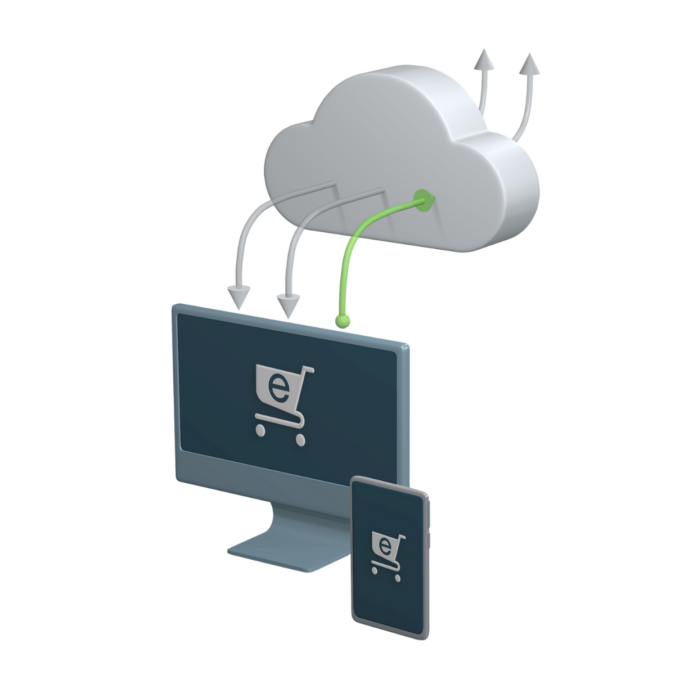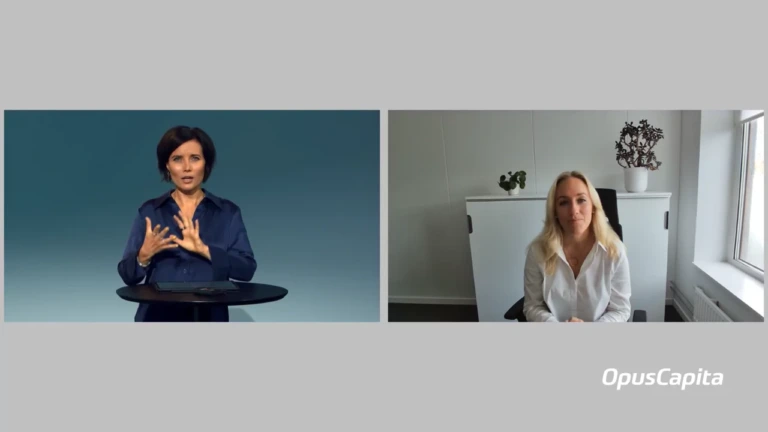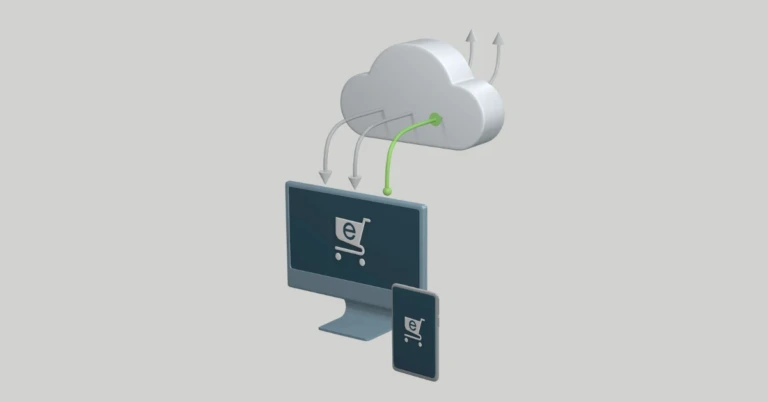
Case Ramirent: Procurement of a million spare parts
Showcasing best practices, Ramirent streamlines their e-procurement processes, building competitive advantage
Ramirent implemented OpusCapita eProcurement, segmented their main categories of spend and onboarded the suppliers, one category at a time, to provide e-catalogs and accept e-orders.
Procurement at Ramirent worked, but it wasn’t very ergonomic. For example: adding a new item to the catalog took almost 3 days and it was a constant struggle to maintain the negotiated prices in the system. It was also difficult to switch or engage new suppliers.
“With OpusCapita, we have not only been able to monitor and control our spend much better, we have also seen other cost saving effects like automated order process (at the supplier), more correct invoices, pre-coded cost allocation, etc.”
Challenge
Procurement at Ramirent worked, but there were fundamental operational issues. While mechanics knew what they needed, the Buyers struggled with a lack of visibility into what to buy and from whom. Although technically much of the spend was managed through an ERP, it wasn’t very ergonomic. Due to this, it was harder to leverage the results of negotiated contracts.
Solution
Ramirent implemented OpusCapita eProcurement, segmented their main categories of spend and onboarded the suppliers, one category at a time, to provide eCatalogs and accept eOrders. Budget controls were also introduced and new controls meant purchasing policy was better managed.
Results
154 suppliers have been onboarded with 256 catalogs covering MRO, Spare Parts, Bulk Goods and Equipment. Since 2016, the number of POs per day has doubled (100) with the amount of spend passing through the system growing by 400% in just 3 years. With OpusCapita, Ramirent has great negotiation power due to the fact that it is now very simple to switch suppliers.
Smooth and Compliant Procurement of a Million Spare Parts Captures Savings on the Bottom Line
Despite the success in their source-to-contract process, Ramirent struggled to capture the negotiated and contracted savings on the bottom line. To close the gap between sourcing and spending and to address the pain points in their procure-to-pay process, Ramirent chose to implement the OpusCapita eProcurement system.
The catalog management and purchasing solution has now won over both the mechanics ordering spare parts and the group sourcing striving for compliance. We interviewed Fredrik Svanestrand, Head of Group Sourcing at Ramirent and asked him to share their challenges and the keys to successfully turning the situation around.
“Simple and user-friendly ordering speeds up the process. After the right part is identified, an order can be placed with a few clicks, and the order flow continues seamlessly from there to the approval of the purchase order, and finally all the way to the other end, the purchase invoice matching.”
Fredrik Svanestrand, Head of Group Sourcing, Ramirent
The slogan for Ramirent, the leading machinery and equipment rental group in the Baltic rim, is ‘more than machines’. But as Fredrik Svanestrand points out the daily operations of the company actually have a lot to do with machines. Ramirent has over 25 000 different types of equipment in its portfolio of 200 000 rental items, everything from small hand-held breaking and drilling tools to huge tower cranes.
To keep the equipment up and running, Ramirent service hubs and customer locations for maintaining and repairing the fleet require over a million different spare parts.
“It is crucial for our operations that the mechanics can quickly access spare parts information and place an order for the right parts. For us in group sourcing, it is important that the buyers know where they should purchase the spare parts. With 290 locations in 10 countries in Northern, Eastern, and Central Europe, it is a complex and decentralized environment,” Svanestrand comments.
Focus on everyday purchasing processes
A couple of years ago, Ramirent focused on developing the group’s source-to-contract process – hiring category managers and defining category strategies, selecting preferred suppliers, and establishing contracts – and achieved good results.
“We have been able to deliver solid contracted savings every year. However, we have been struggling with turning these into realized savings visible on the bottom line. One major reason for this were the inefficiencies in our procure-to-pay chain,” Svanestrand states.
The benefits of the contracts made by group sourcing were not fully leveraged in the procurement process. The purchase order functionality in Ramirent’s ERP system was difficult to use and lacked detailed item information, which made ordering spare parts a time-consuming task. It also led to users preferring to go across the street or call previous suppliers. In addition, the accounts payable department had to do a lot of manual work handling invoices that did not match the purchase orders, as the supplier prices in the system could not be trusted.
“We had, for instance, a high number of new suppliers every month, which is not acceptable. We have been searching for the right balance of centralization in procurement, and instead of centralizing the purchasing, we wanted to support the local operations and help make everyday processes smooth for them.”
Ramirent defined targets for a well-functioning procure-to-pay process on a group-level: a user-friendly e-procurement system that would make ordering spare parts from compliant suppliers easy and that would have smooth approval workflow and support for invoice matching. OpusCapita provided the complete solution for catalog management and purchasing.

Improved compliance and fleet uptime
The on-line spare parts catalog will help turn things around both from the operational and sourcing perspective.
“The end users can now make a fact-based decision on the needed spare parts. They can choose in the system between an OEM supplier and a local dealer, for example, or use generic alternatives. The transparent vendor options allow them to compare and consider prices, delivery times and warranty terms before ordering the parts,” says Fredrik Svanestrand, describing the new state of things.
For sourcing, the launch of the OpusCapita eProcurement system has already begun to improve compliance, as only preferred suppliers are listed in the system. According to Svanestrand, after implementation in three Nordic countries, the impact could already be seen. Compliance with both the contracted suppliers and contractual terms has improved, positively impacting the bottom line.
To make it as easy as possible for the mechanics to find the right spare parts, OpusCapita developed a parts book functionality for the OpusCapita eProcurement system together with Ramirent. In addition to searching for an item in the webshop interface by the part name or number, the mechanics can also drill down to exploded-view drawings of the machinery and identify the necessary part from there. Users are also prompted to order connected parts, ensuring that they purchase everything they need for the repair at once.
“Simple and user-friendly ordering speeds up the process. After the right part is identified, an order can be placed with a few clicks, and the order flow continues seamlessly from there to the approval of the purchase order, and finally all the way to the other end, the purchase invoice matching. The streamlined purchasing process makes our maintenance work more efficient, which in turn helps to increase the uptime of our equipment fleet.”
Better control over budgets
Ramirent also opted for another customized feature in the OpusCapita eProcurement system, to improve compliance and control over budgets in local operations.
“Sourcing, finance and local management spend a lot of time and effort on creating annual investment plans for equipment purchases for each country and category. But we have had only a limited ability to track compliance with the plan and monitor the Capex costs in detail,” says Fredrik Svanestrand.
With the budget functionality, group sourcing and finance are able to set budgets for specific categories in the OpusCapita eProcurement system. Whenever a purchase order is created, the appropriate yearly budget is immediately reduced, decreasing the risk of overspending. For bulk purchases, Ramirent decided on monthly budgets, and also made bulk products visible only to approved purchasers in the system.
“It all adds up to better control and visibility. If the budget is overrun, no orders can be placed. The functionality also allows us to easily block the use of the budgets if, for instance, something happens in the market and we need to issue a Capex freeze.”
”People are used to fluent web shop interfaces in their private lives. If you offer a similar experience at work, it will catch on quickly.”
Fredrik Svanestrand, Head of Group Sourcing, Ramirent
Three key elements for e-procurement success
Fredrik Svanestrand lists three key elements for the successful launch of the OpusCapita eProcurement system and for establishing the new way of operating in Ramirent’s procure-to-pay. Firstly, the usability of the system has motivated the users.
“We have introduced several IT systems to the organization over the last couple of years, and this project is the only one where the adoption of the system has spread naturally, requiring extremely little effort from us. People are used to fluent web shop interfaces in their private lives. If you offer a similar experience at work, it will catch on quickly.”
Secondly, Svanestrand emphasizes the importance of supplier engagement. Suppliers submit the spare parts data, catalogs, and exploded-view drawings for the parts book functionality through a self-service interface.
“Engaging suppliers is a challenge, and it takes time and dedicated resources, especially with the smaller suppliers in immature product categories. But it is crucial: until we have around 80% of all suppliers represented in the system, it is not going to be the obvious first place for the users to look for spare parts.”
And thirdly, good cooperation between sourcing, finance, IT, and business is important.
“It has been a key success factor for our implementation to run so smoothly. To develop a source-to-pay process, bring all the stakeholders together, look at the whole process in its entirety, and only then identify the challenges and parts that need improving,” Svanestrand says.


We interviewed Fredrik Svanestrand, Head of Group Sourcing at Ramirent and asked him to share their challenges and the keys to successfully turning the situation around.





